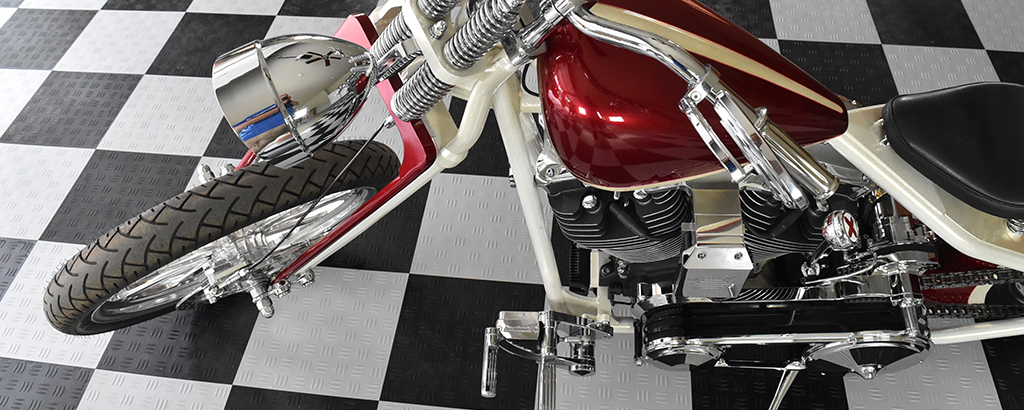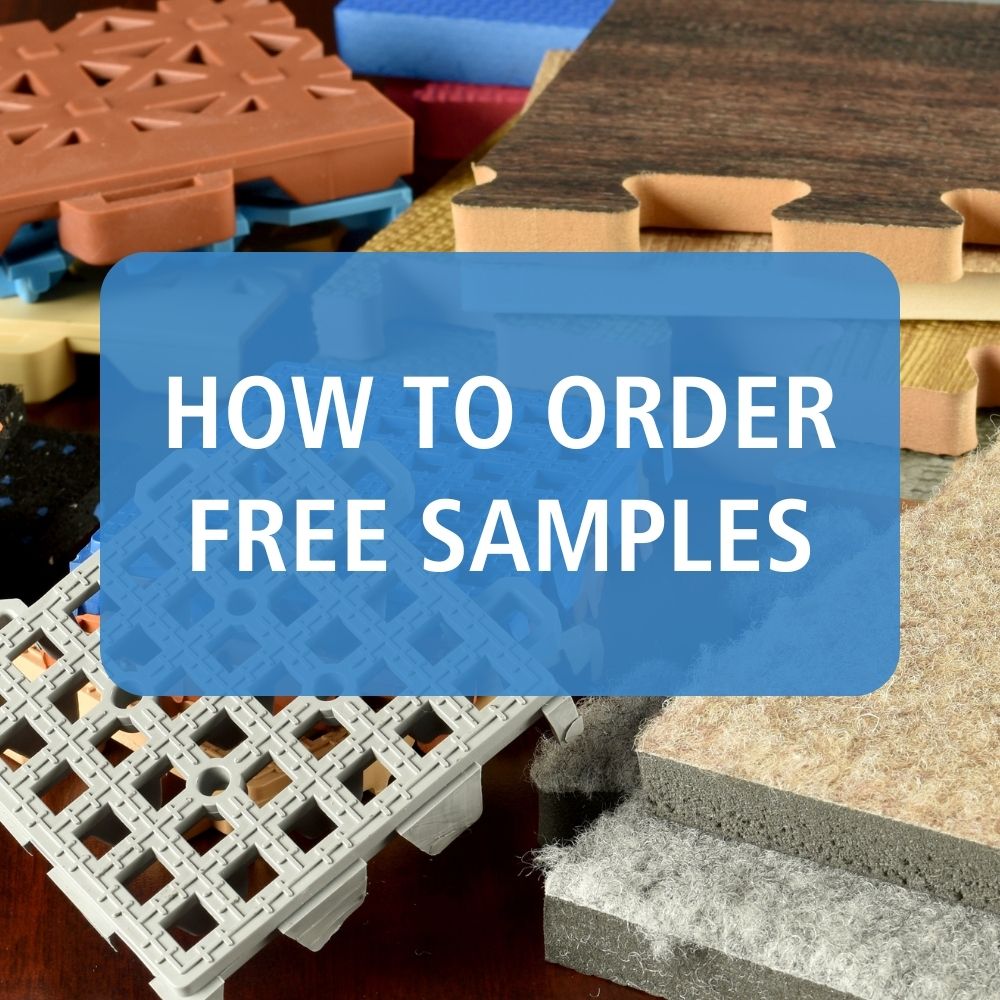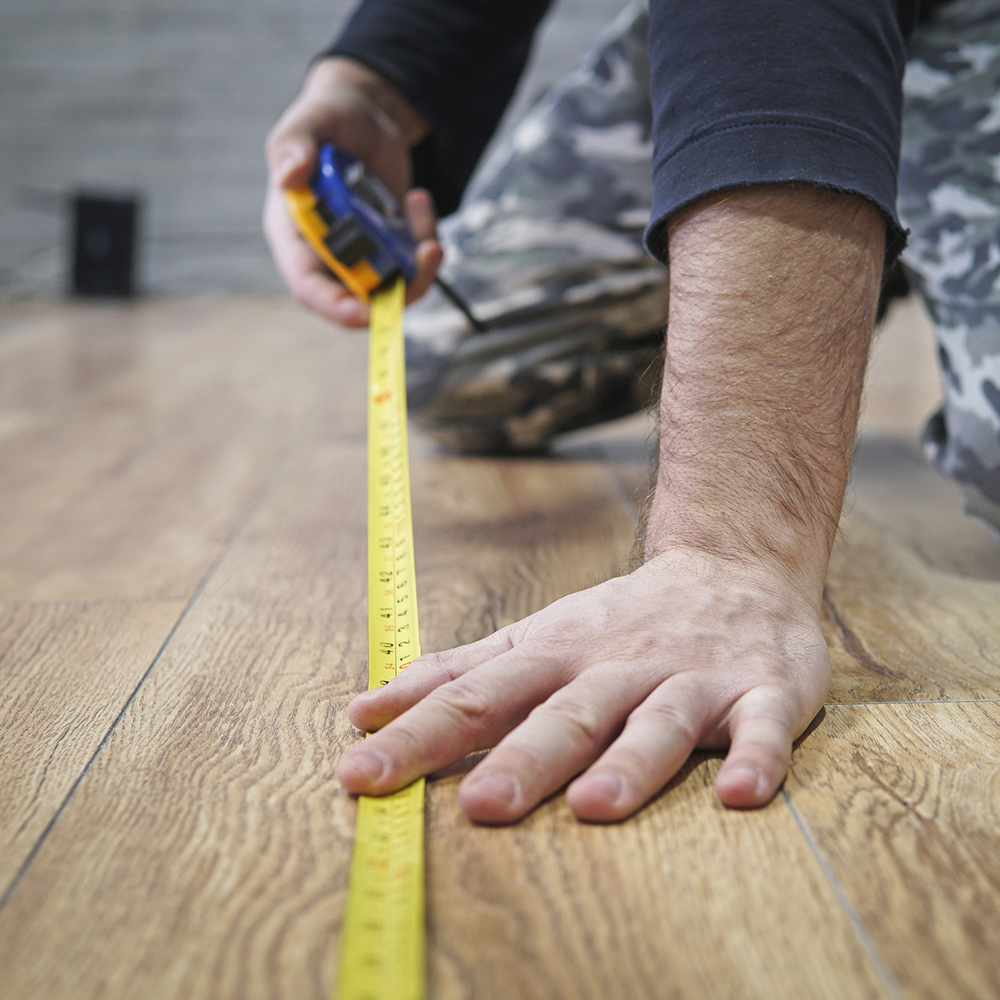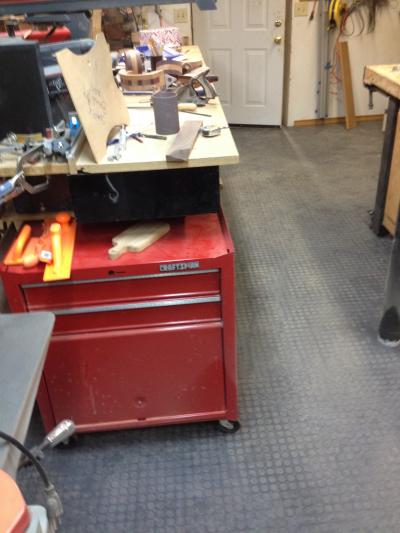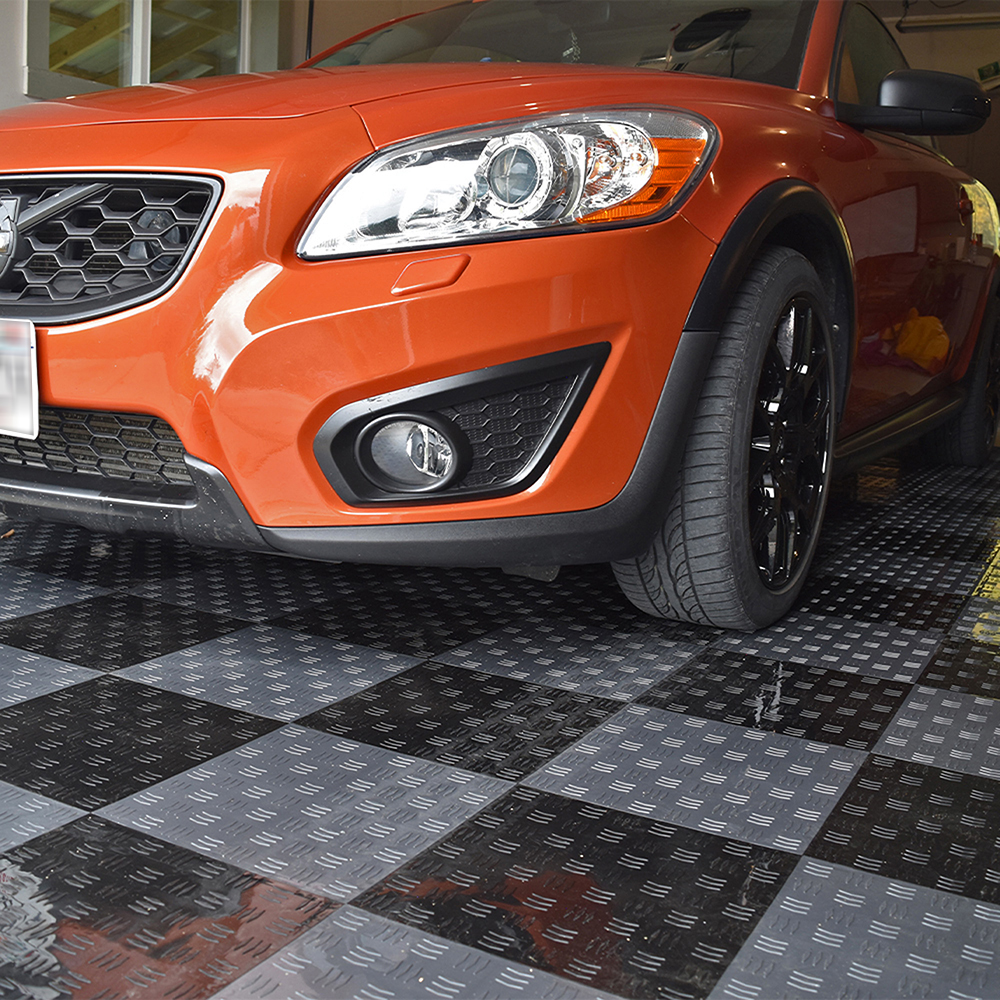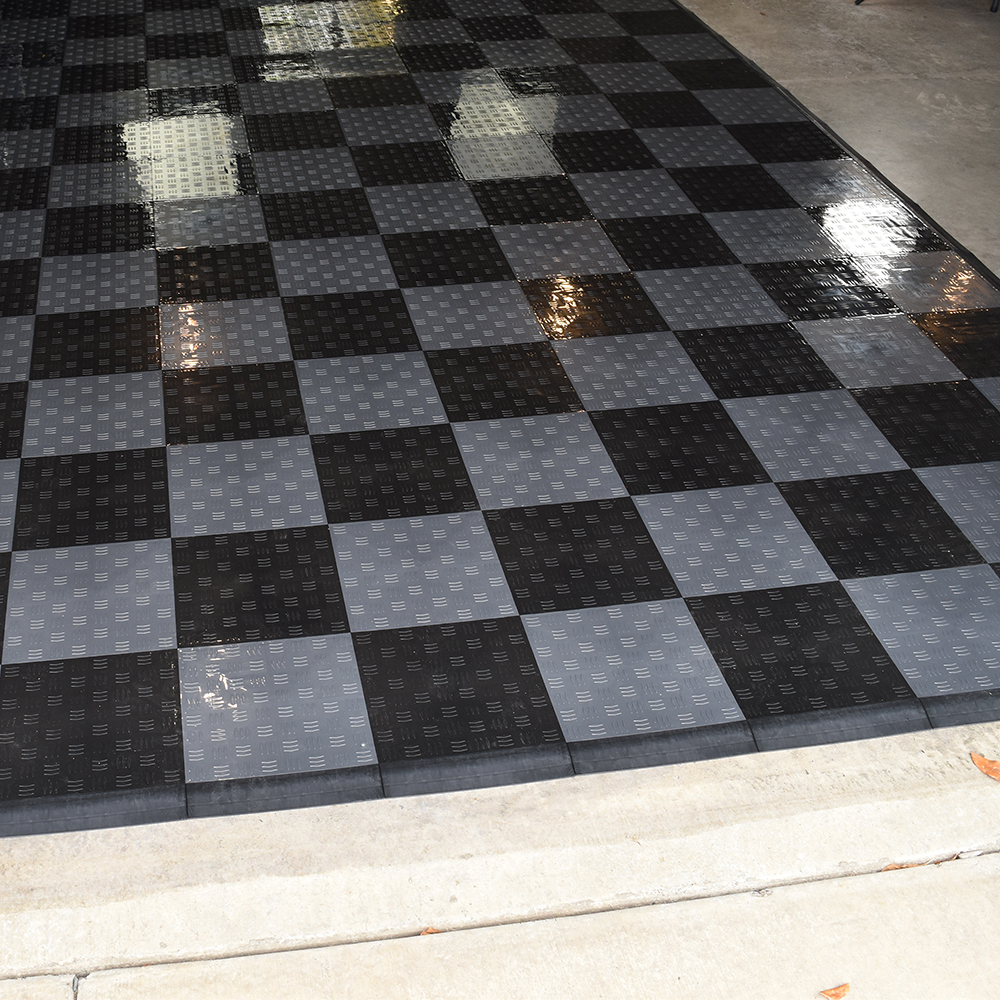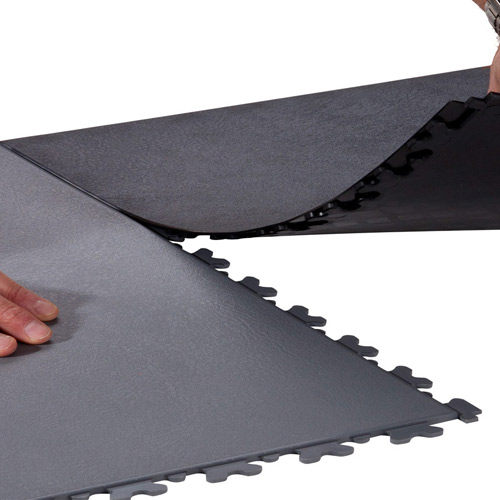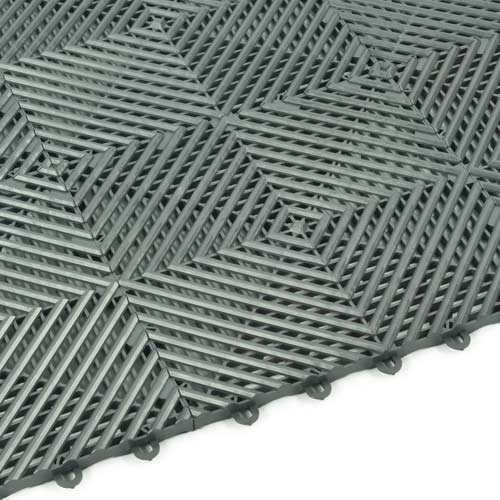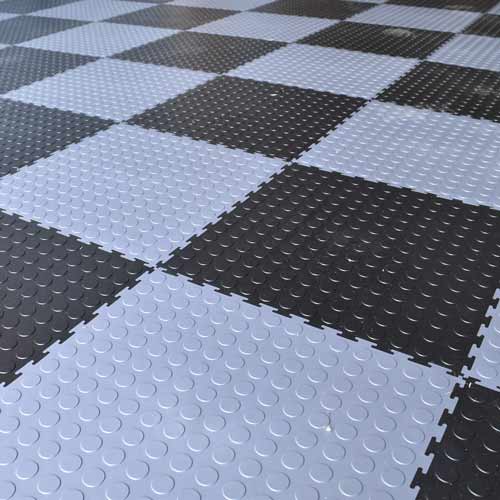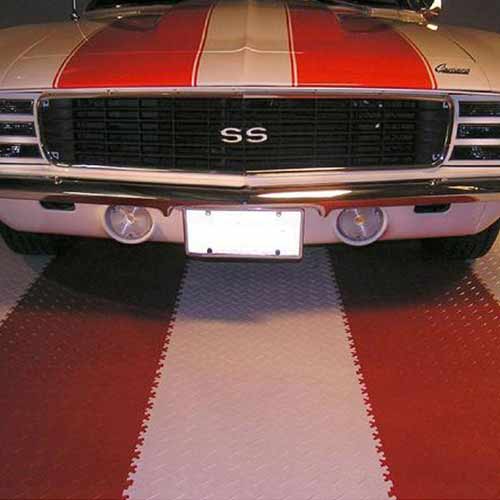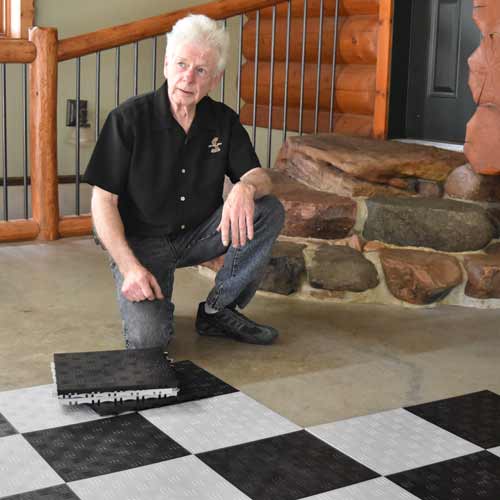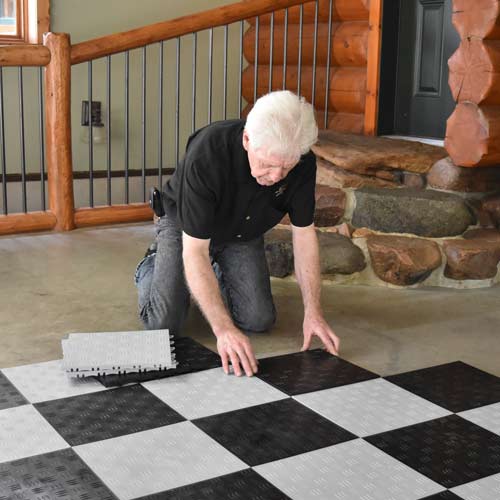Garage Flooring How To
Garage Flooring Guide
Garage Flooring Blogs, Videos and Testimonials
When it comes to installing garage flooring it's always best to be as informed as possible. That's why Greatmats put together this extensive and ever growing guide to garage floor tiles. Here you'll find everything from options and ideas to instructions, videos and testimonials from other garage floor tile users.
Garage Flooring Blogs, Videos and Testimonials
If you aren’t a fan of your cement garage flooring, plenty of other floor cover options exist. Whether you want to create extra durability in the floor, add some traction, or create a colorful, welcoming space for multiple use cases, picking the right flooring to install over the concrete is important.
By adding specialized garage tile over the top of a cracked or textured existing sub-floor, you’ll make the area easier to clean. Flooring mats often have a surface pattern, which creates a steadier non-slip footing, which is important if the floor becomes wet. If you have a vintage car, you may want to create a show floor in the garage.
Some people even choose to transform this space from a home for a vehicle into a man cave or an exercise area with the right kind of garage flooring.
Here are some common use case ideas to help with finding the right flooring choice at the right cost for your garage.
Parking vehicles. Some garage flooring that goes over the current sub-floor is made to support the weight of a vehicle. Don’t expect to be able to add just any flooring tile kit to the garage area and have it survive under the weight of a car. You need a particular type of flooring.
Look for a heavy duty material that is rated to support at least 10,000 pounds of pressure per square inch. For huge pickup truck that’s loaded with gear, you may need closer to 20,000 pounds per square inch.
Liquid resistant. As another consideration when vehicles or outdoor power equipment will be stored on the garage flooring, you’ll want it to be resistant to all kinds of liquids.
If you’re driving vehicles over this installed floor, at some point the vehicle will track rain or snow into the garage. If the flooring material soaks up this water, it could lead to the formation of mold and mildew, creating odors in the garage.
Additionally, vehicles often leak oil or other liquid solvents while parked in the garage. The floor material you choose must have a seal in the surface to be able to resist these chemicals and oils, or you’ll end up with a permanent stain if not degradation of the flooring itself.
Foot traction. If the floor you choose has waterproof properties, but it does not drain the liquid away, you could end up with a slipping hazard in the garage.
In this case, you may want to select a product that has enough traction to provide a safe footing. Surface textures can include raised coin or diamond patterns among others.
Raised base. Some garage floors have constant moisture issues on the cement floor, much like sometimes occurs in a basement. In this case, you may want a raised base product.
It uses small pegs on the bottom of the tile to lift the bottom away from the sub-floor. This allows air to flow underneath the material, allowing the moisture to evaporate naturally.
If your garage area sometimes suffers from flooding issues, the raised tile is a smart choice. It uses an interlocking design with no adhesive required, so you can remove it if needed to allow for faster cleanup.
Pay particular attention to the weight rating for any raised base tile. Some of these tiles may not be able to support the weight of certain vehicles.
Workout space. One of the most common reasons for installing new flooring over the top of an existing cement garage floor is to create an exercise area. Consider using rubber mats or tiles as the garage flooring in this use case scenario.
Rubber is extremely durable. It is thick enough to support free weights or exercise machines without causing any damage to the existing sub-floor. Rubber also has some cushioning properties, which will protect your joints from shock, allowing you to work out more comfortably. Just don't park your vehicles over rubber floors as they are not compatible with automotive fluids.
Living area. Creating a man cave, a workshop, or a play area are also popular choices for transforming a garage.
Again, rubber flooring with its impact absorbing properties is a nice choice here. It also provides some thermal protection for those sitting or walking on the floor. Cement floors can be cold to the touch, but rubber will shield people from this cold surface.
If you don’t want to use rubber, materials like foam or PVC plastic may even work better - depending on the purpose of the floor. These materials will offer fun colors and floor patterns to create the desired style in the space and generally offer an even better thermal buffer than rubber.
Protecting the cement. Another common reason to use garage flooring tiles is to protect the current sub-floor.
Should your existing cement garage floor have a noticeable crack or be in need of repair, you can install tiles over the top to protect these areas until you have the ability to fix them. These tiles often have an interlocking design that doesn’t require adhesive, meaning you easily can install and remove them as needed.
Garage flooring buying guide. Should you want to read more about your options to create a new floor cover in your garage, just click on some of the links in this guide.
Review the series of videos, articles, testimonials, and design ideas, and you’ll have the information required to make the best choice for your new garage flooring.
By adding specialized garage tile over the top of a cracked or textured existing sub-floor, you’ll make the area easier to clean. Flooring mats often have a surface pattern, which creates a steadier non-slip footing, which is important if the floor becomes wet. If you have a vintage car, you may want to create a show floor in the garage.
Some people even choose to transform this space from a home for a vehicle into a man cave or an exercise area with the right kind of garage flooring.
Here are some common use case ideas to help with finding the right flooring choice at the right cost for your garage.
Parking vehicles. Some garage flooring that goes over the current sub-floor is made to support the weight of a vehicle. Don’t expect to be able to add just any flooring tile kit to the garage area and have it survive under the weight of a car. You need a particular type of flooring.
Look for a heavy duty material that is rated to support at least 10,000 pounds of pressure per square inch. For huge pickup truck that’s loaded with gear, you may need closer to 20,000 pounds per square inch.
Liquid resistant. As another consideration when vehicles or outdoor power equipment will be stored on the garage flooring, you’ll want it to be resistant to all kinds of liquids.
If you’re driving vehicles over this installed floor, at some point the vehicle will track rain or snow into the garage. If the flooring material soaks up this water, it could lead to the formation of mold and mildew, creating odors in the garage.
Additionally, vehicles often leak oil or other liquid solvents while parked in the garage. The floor material you choose must have a seal in the surface to be able to resist these chemicals and oils, or you’ll end up with a permanent stain if not degradation of the flooring itself.
Foot traction. If the floor you choose has waterproof properties, but it does not drain the liquid away, you could end up with a slipping hazard in the garage.
In this case, you may want to select a product that has enough traction to provide a safe footing. Surface textures can include raised coin or diamond patterns among others.
Raised base. Some garage floors have constant moisture issues on the cement floor, much like sometimes occurs in a basement. In this case, you may want a raised base product.
It uses small pegs on the bottom of the tile to lift the bottom away from the sub-floor. This allows air to flow underneath the material, allowing the moisture to evaporate naturally.
If your garage area sometimes suffers from flooding issues, the raised tile is a smart choice. It uses an interlocking design with no adhesive required, so you can remove it if needed to allow for faster cleanup.
Pay particular attention to the weight rating for any raised base tile. Some of these tiles may not be able to support the weight of certain vehicles.
Workout space. One of the most common reasons for installing new flooring over the top of an existing cement garage floor is to create an exercise area. Consider using rubber mats or tiles as the garage flooring in this use case scenario.
Rubber is extremely durable. It is thick enough to support free weights or exercise machines without causing any damage to the existing sub-floor. Rubber also has some cushioning properties, which will protect your joints from shock, allowing you to work out more comfortably. Just don't park your vehicles over rubber floors as they are not compatible with automotive fluids.
Living area. Creating a man cave, a workshop, or a play area are also popular choices for transforming a garage.
Again, rubber flooring with its impact absorbing properties is a nice choice here. It also provides some thermal protection for those sitting or walking on the floor. Cement floors can be cold to the touch, but rubber will shield people from this cold surface.
If you don’t want to use rubber, materials like foam or PVC plastic may even work better - depending on the purpose of the floor. These materials will offer fun colors and floor patterns to create the desired style in the space and generally offer an even better thermal buffer than rubber.
Protecting the cement. Another common reason to use garage flooring tiles is to protect the current sub-floor.
Should your existing cement garage floor have a noticeable crack or be in need of repair, you can install tiles over the top to protect these areas until you have the ability to fix them. These tiles often have an interlocking design that doesn’t require adhesive, meaning you easily can install and remove them as needed.
Garage flooring buying guide. Should you want to read more about your options to create a new floor cover in your garage, just click on some of the links in this guide.
Review the series of videos, articles, testimonials, and design ideas, and you’ll have the information required to make the best choice for your new garage flooring.
